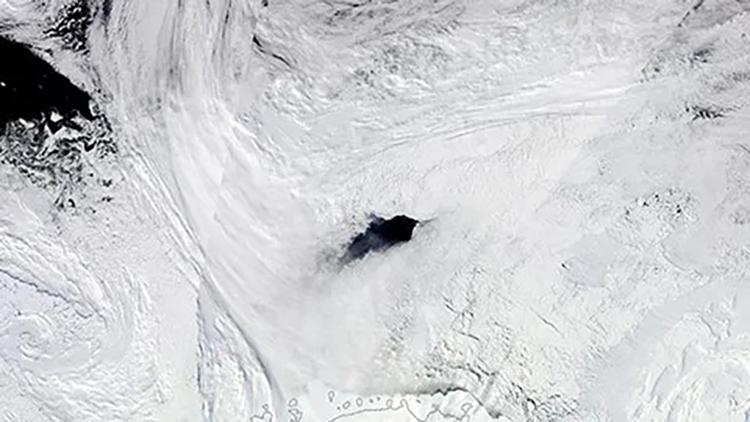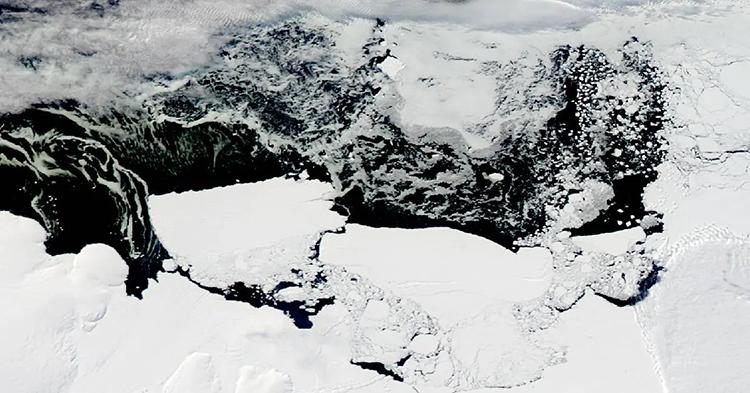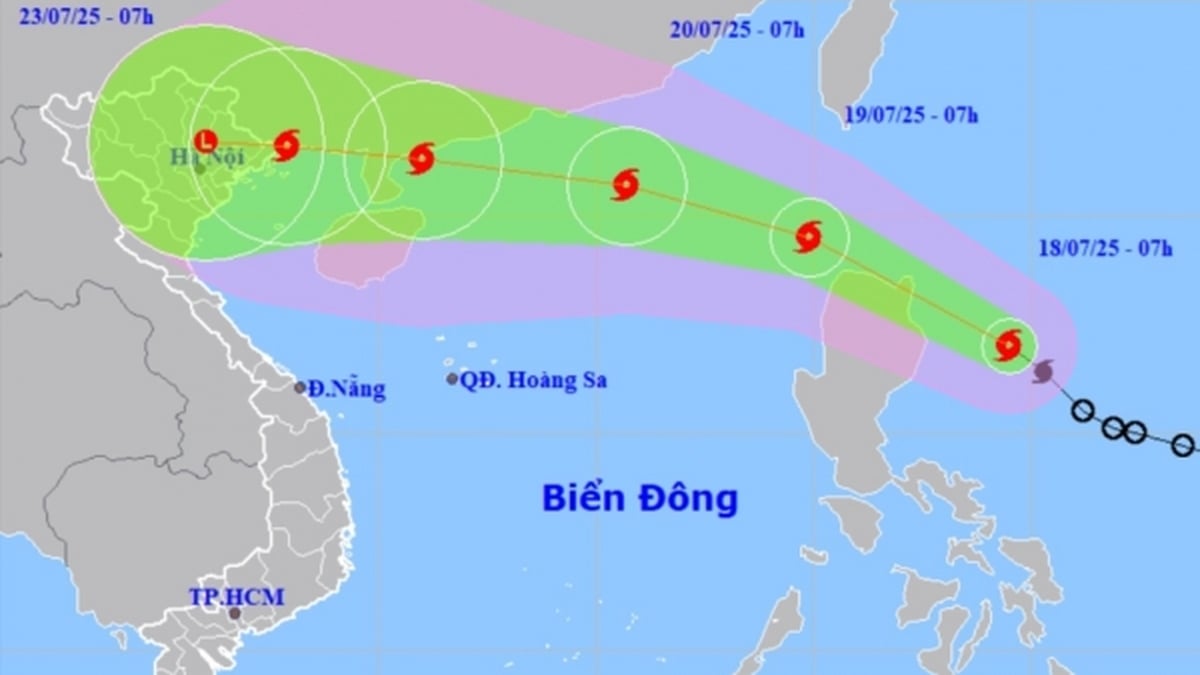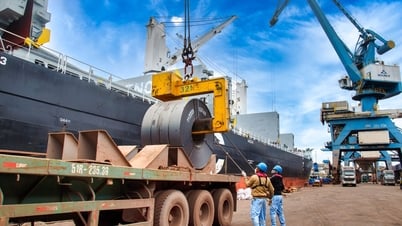Researchers first discovered the giant hole in the Antarctic sea ice in 1974 and called it the Maud Rise polynya.
This strange hole shrinks and expands in varying sizes but always in the same location. Some years, it doesn't appear at all. Since its discovery, the Maud Rise polynya has been a mystery, leaving scientists puzzled about the exact conditions needed for the hole to form.
In 2016 and 2017, an 80,000 square kilometer hole appeared for several weeks during the winter, allowing scientists to get a closer look at the phenomenon and finally solve the mystery after 50 years. They also published this scientific report in early May 2024.

An aerial view of Maud Rise polynya.
2017 was the first time there was such a large and long-lived Maud Rise polynya in the Weddell Sea since the 1970s.
As summer turns to winter in Antarctica, sea ice expands from a minimum area of about 3 million square kilometers to 18 million square kilometers, covering 4% of the Earth's surface in icy white.
Most of this sea ice grows during the weeks-long polar night on floating ice shelves that surround the continent. Gaps in this ice, called polynyas, form when strong winds from the land push chunks of ice apart.
This cold wind also freezes more seawater inside the polynyas, adding additional chunks of ice to the interconnected ice mass.
But in the open ocean and away from coastal winds where the Maud Rise polynya forms, holes in the sea ice are less likely to develop. This, coupled with the dramatic decline in overall ice extent across the Southern Ocean, has scientists wondering what specific conditions might cause the Maud Rise polynya to form.

Maud Rise polynya is one of the mysteries of Antarctica.
To investigate the mystery, scientists studied data from satellites, autonomous buoys and marine mammals tagged with tracking chips, as well as previous observations made by other researchers.
They found that in 2016 and 2017, the Weddell Sea's circular ocean current, known as the Weddell Gyre, was stronger than other years, allowing underwater currents to more easily carry salt and heat closer to the surface.
Additionally, Maud Rise Polynya is located near Maud Rise, an underwater mountain. In 2016 and 2017, due to stronger currents, salt was suspended around this canyon while winds blew across the surface, creating a spiral effect that pulled saltier water around the submerged mountain to the surface.
This salt then lowers the freezing point of surface water, allowing the Maud Rise polynya to form and persist.
The new findings are important for understanding Antarctica and its broader impacts on the global ocean, the researchers say. Climate change has made winds from the southernmost continent stronger, potentially creating more holes in the future.
Meanwhile, 40% of the world's seawater originates from the Antarctic coast, making it important in regulating the climate of regions around the planet.
Source: https://giadinh.suckhoedoisong.vn/ho-bang-bi-an-o-nam-cuc-co-kich-thuoc-bang-ca-thuy-si-lien-tuc-nut-ra-khong-ro-ly-do-cac-nha-khoa-hoc-cuoi-cung-cung-tim-ra-cau-tra-loi-172240508074627051.htm
































































































![[Infographic] In 2025, 47 products will achieve national OCOP](https://vphoto.vietnam.vn/thumb/402x226/vietnam/resource/IMAGE/2025/7/16/5d672398b0744db3ab920e05db8e5b7d)







Comment (0)